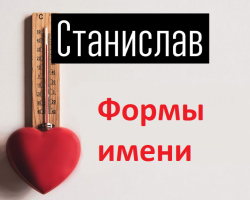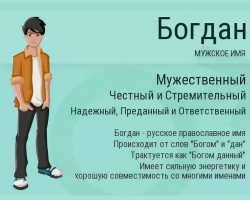In this article, we consider the reasons and the main indicators on how to determine the lack of iron in the body.
Content
- Lack of iron in the body: the first symptoms
- How is manifestation of iron or iron deficiency anemia manifested?
- How to determine the lack of iron in women and children: additional signs
- The causes of the lack of iron in the body and the daily need of the body
- How to diagnose an iron lack of iron: norm indicators, rules for passing tests
- How to make up for a lack of iron?
- Video: How to determine the lack of iron by symptoms?
The lack of iron, as one of the important trace elements of our body, is reflected in well -being and general condition. Since the iron provides the transportation of oxygen through the tissues, its deficiency, first of all, is reflected in the immune system. In children, it provokes a delay in mental development and changes the psycho -emotional background. Therefore, it is so important to notice the signals of the body in time, which indicate a lack of iron, which we will talk about in detail in this material.
Lack of iron in the body: the first symptoms
There are three stages of development of iron lack in the body - Prelateful, latent and manifest. At the first stage of the development of the disease, there are no determining symptoms, but in the future you can even independently determine the deficiency of the element.
Important: If you do not take measures on time, then the lack of iron leads to the development of anemia! At risk are women, especially pregnant and lactating, donors, adolescents and children under 6 years old, as well as elderly people after 60.

Latent deficiency is expressed:
- muscle weakness for no cause, severe fatigue and shortness of breath after insignificant physical activity;
- the thinning of the skin, a decrease in its elasticity and rashes/spots of various nature (skin dystrophy);
- there is a perversion of taste or appetite - the desire to eat chalk, sand, coal, clay, etc., as well as raw dough or minced meat, cereals;
- addiction to spicy, spicy or very salty food appears;
- in a slight degree, dry skin, fragility of nails and hair loss are noticeable.
How is manifestation of iron or iron deficiency anemia manifested?
The third stage is divided into 2 stages - Hidden and obvious lack of iron (anemia). But the symptoms are generally similar, vary only by the degree of severity. Although they depend entirely on the age and duration of the disease in the patient.
The main features of the 3rd stage of iron deficiency:
- chronic fatigue and decrease in performance;
- rapid heartbeat and shortness of breath from any load;
- drowsiness and absent -mindedness;
- frequent colds and intestinal infections;
- dry mouth and increased sensitivity of the tongue (tinging is felt, sometimes even burning);
- “Zhades” appear in the corners of the mouth;
- i want "strange" food (raw meat, non-eating objects);
- sometimes the sense of smell is distorted - like the smell of varnish, glue, gasoline, paints, acetone, etc.;
- often the head hurts, dizziness is not uncommon, even fainting occurs in severe cases;
- the sensitivity to cold increases;
- the skin becomes pale, dry and very sensitive to peeling and cracks, sometimes has a greenish tint;
- nails become thinner, quickly break and acquire a concave/spoon -shaped shape;
- the hair gets gray ahead of time, becomes lifeless, seize and fall out;
- the patient’s mental state suffers - irritability and tearfulness increase, but attentiveness and memory decreases, sometimes depression arises;
- in some cases, there are convulsions and trembling of the limbs. By the way, the development of Alzheimer and Parkinson's disease is associated with chronic lack of iron.

How to determine the lack of iron in women and children: additional signs
Pregnant and lactating women are much more likely to suffer from a lack of iron, so they should be more attentive to the signals of the body. In addition, their condition is reflected in the health of the baby, who in the future may have problems with concentration and socialization. Also at the risk group are women who have abundant menstruation. But it is more difficult for men to make up for iron deficiency due to the pain of physical activity and activity, although the need for the daily iron rate is almost half as much.
Additional symptoms of iron lack of women:
- dryness and burning of vulva;
- constant loss of strength with a frequent change of mood;
- increased tearfulness and lethargy;
- with a significant lack of iron, noise is possible in the ears and flies before the eyes.
In children, the following signs are more often observed:
- reduced immunity;
- bad appetite;
- constant pallor;
- memory deterioration, decrease in performance and concentration;
- powering the earth, clay, chalk, etc.

The causes of the lack of iron in the body and the daily need of the body
- We get iron from outside, but the first reason for its deficiency is blood loss of various nature. Those. chronic or hidden blood loss, most often the digestive tract; single mass losses, after which the body does not have time to make up for the reserves of the element; uterine bleeding. Less commonly, a lack of iron occurs in donors with frequent blood donation, especially in the female.
- In women, the need for daily iron rate is higher than in men (see table). But in pregnant and nursing mothers, as well as in adolescents during the period of active growth, this need grows due to increased iron consumption. Therefore, if you do not use the laid share, the development of anemia and other health problems is possible.

- Unstable nutrition - The third most frequency is the reason for the lack of iron. And also more often found in women who are fond of diets and limit the use of red meat. Starvation, monotonous food with a predominance of fats and carbohydrates or dairy products is extremely negative.
Important: Consider the compatibility of products! Iron -containing products cannot be washed down with coffee or tea. The tannin, which is contained in them, block the absorption of the mineral. Calcium and iron neutralize each other! Therefore, buckwheat with milk is a delicious dish, but completely useless in terms of replenishing vitamins.
- Violation of the assimilation of iron and its transportation in connection with a transfer deficit. Iron from food is absorbed in the small intestine, so diseases of the small intestine, the absence of chloristoric acid in gastric juice, resection of this area leads to the development of iron deficiency.
- The least common reason - physical exercise. During active sports or under difficult conditions of physical labor, a significant fraction of iron comes out with later, so it is important to properly balance the nutrition in order to properly replenish the mineral in the body.
How to diagnose an iron lack of iron: norm indicators, rules for passing tests
If you find symptoms of a lack of iron, then you should consult your attending physician, who will give a direction for a general blood test. It is this analysis that will show the level of hemoglobin, which reflects the number of iron -containing proteins.
To pass the analysis, you need to adhere to several rules:
- donate blood only on an empty stomach (the last easy meal should be in 8 hours);
- 48-72 hours before delivery Do not take alcohol and fatty foods, exclude intense loads, visiting a bath and sauna;
- 2-3 hours before analysis Refrain from smoking (The day before delivery, reduce the number of smoked cigarettes).
The norm indicators depending on age and gender:

To carefully study the level of iron in the blood, you need to pass a biochemical blood test for:
- iron serum, What shows its backup reserve in the fabrics;
- transferrin, which indicates the metabolism of the element, type and cause of its deficiency;
- ferrin - shows the exhaustion of stocks even in the early stages;
- vitamin B12, What will show vitamin with food;
- OZHSS (general iron -binding capacity of serum) - Determines the amount of iron and its relationship with other proteins.
Important: Before biochemistry, it is allowed to drink only still water, the last meal should be in 10-12 hours.
How to make up for a lack of iron?
First of all, you need regulate your food - Make an emphasis on red meat, offal, legumes, nuts and eggs. Oysters, figs, grenades and raisins are rich in iron. And for the mineral to be better absorbed, replenish the diet with products with vitamins C and B12. Limit the use of coffee and carbonated drinks, exclude alcohol.
With a strong or chronic lack of iron, you will need to take vitamins and drugs, the choice of which you will read in our article "List of the best drugs and vitamin additives for raising iron."
Video: How to determine the lack of iron by symptoms?
You will also be interested in the following articles:








The most common symptom, it seems to me, is a constant weakness, because I did not even have the strength to go out into the street. Diagnosis of everything showed just a lack of iron. On the advice of a doctor, she began to take him in a lecture uniform from Evalar, this is the most easily digestible form, plus with the lack of side effects. Gradually, everything came back to normal, my health has become many times better, now I try to eat more meat.